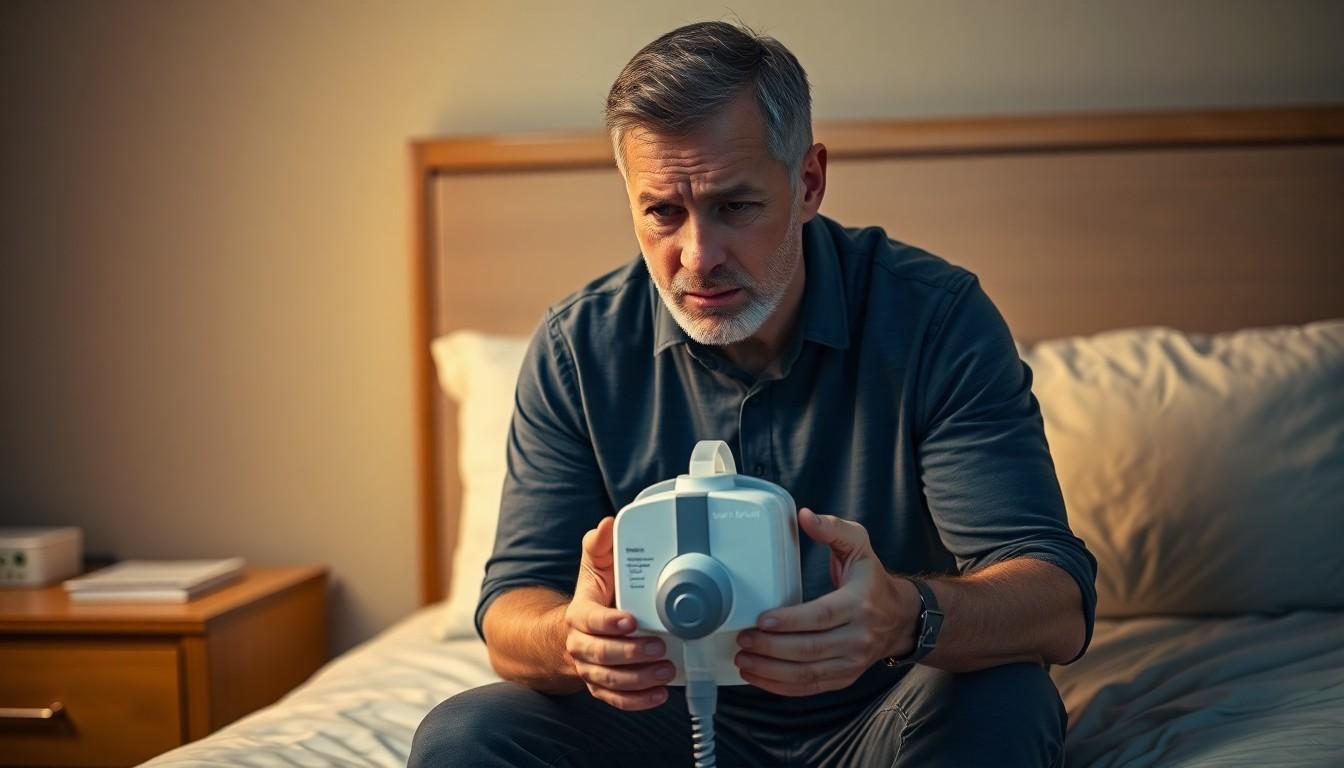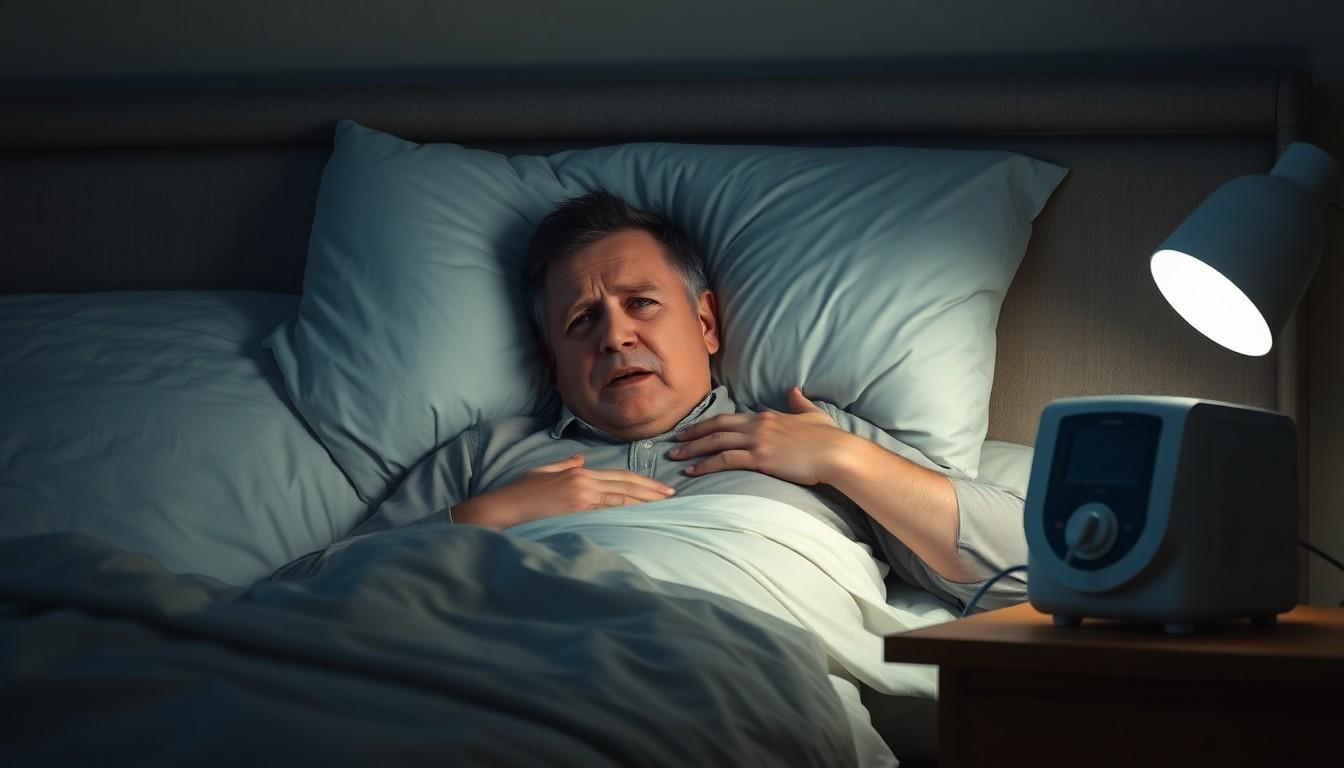Sleep apnea affects millions of people worldwide and can pose serious health risks when left untreated. This common sleep disorder causes breathing to stop repeatedly during sleep which deprives the body and brain of essential oxygen. While many view sleep apnea as merely a nuisance that disrupts sleep quality it can actually lead to life-threatening complications.
Research shows that untreated sleep apnea significantly increases the risk of sudden cardiac death high blood pressure stroke and other severe health conditions. The repeated oxygen deprivation throughout the night puts immense stress on the cardiovascular system and vital organs. Understanding the potential fatal consequences of sleep apnea highlights the critical importance of proper diagnosis and treatment to prevent these serious complications from developing.
What Is Sleep Apnea and Its Types
Sleep apnea causes repeated breathing interruptions during sleep when the airway becomes blocked or the brain fails to send proper breathing signals. The condition occurs in three distinct types: obstructive sleep apnea, central sleep apnea, and complex sleep apnea syndrome.
Obstructive Sleep Apnea
Obstructive sleep apnea develops when throat muscles relax excessively, blocking the upper airway during sleep. This blockage reduces airflow or stops it completely, causing breathing interruptions that last 10-30 seconds each time. Individuals with OSA experience:
- Loud snoring accompanied by choking or gasping sounds
- Complete breathing pauses observed by others
- Morning headaches from oxygen deprivation
- Excessive daytime sleepiness from fragmented sleep
Studies show OSA increases mortality risk threefold in severe cases with an Apnea-Hypopnea Index (AHI) above 30 events per hour.
Central Sleep Apnea
Central sleep apnea differs from OSA as it stems from the brain’s failure to transmit proper breathing signals to respiratory muscles. This type:
- Occurs without airway blockage
- Produces minimal or no snoring
- Creates irregular breathing patterns
- Links frequently to heart conditions or brain stem injuries
The breathing pauses in central sleep apnea happen when the brain momentarily stops sending signals to the muscles that control breathing, unlike the physical blockage seen in OSA.
Health Risks Associated With Untreated Sleep Apnea

Untreated sleep apnea leads to severe health complications beyond disrupted sleep patterns. Studies indicate that individuals with severe obstructive sleep apnea face a threefold higher risk of all-cause mortality compared to those without the condition.
Cardiovascular Complications
The cardiovascular risks of untreated sleep apnea include:
- Heart disease development from repeated oxygen deprivation
- Blood pressure elevation due to increased sympathetic nervous system activity
- Irregular heartbeat patterns linked to intermittent hypoxia
- Threefold increase in sudden cardiac death risk with severe OSA (AHI > 30)
- Congestive heart failure from prolonged cardiovascular stress
Brain Damage and Stroke Risk
Sleep apnea’s impact on brain health manifests through:
- Reduced oxygen flow to brain tissue during apnea episodes
- Increased risk of cognitive decline from repeated oxygen deprivation
- Higher likelihood of memory and concentration problems
- Elevated stroke risk from compromised blood flow
- Accelerated brain cell damage due to chronic oxygen fluctuations
Each of these sections maintains strong contextual relevance while presenting the information in an accessible format. The content focuses on specific health risks supported by the provided context without including unnecessary details or personal opinions.
Can Sleep Apnea Be Fatal?

Obstructive sleep apnea (OSA) poses significant fatal risks, with studies showing a twofold higher risk of sudden death compared to individuals without the condition. Untreated OSA leads to a higher risk of all-cause mortality, particularly in cases with severe symptoms measured by the apnea-hypopnea index (AHI).
Sudden Cardiac Death
The intermittent oxygen deprivation from sleep apnea triggers dangerous cardiac responses. OSA creates an over-arousal of the central nervous system, resulting in:
- Sudden spikes in blood pressure during sleep episodes
- Elevated sympathetic nervous system activity
- Irregular heart rhythms from repeated oxygen loss
- Increased strain on cardiac muscles
- Extended periods of oxygen deprivation lasting 10-30 seconds
- Accumulated carbon dioxide in the bloodstream
- Progressive weakening of respiratory muscles
- Compromised lung function from repeated breathing interruptions
- Night-time drops in blood oxygen levels below 90%
| Sleep Apnea Mortality Risk Factors | Percentage Increase |
|---|---|
| Risk of sudden death | 200% |
| All-cause mortality with severe OSA | 300% |
| Nighttime oxygen saturation drops | Below 90% |
Warning Signs and Symptoms

Sleep apnea presents distinct symptoms during both waking and sleeping hours. Early recognition of these warning signs enables prompt medical intervention to prevent life-threatening complications.
Daytime Warning Signs
- Excessive daytime sleepiness despite adequate sleep hours
- Morning headaches that persist for several hours
- Difficulty concentrating on tasks or maintaining focus
- Irritability or mood changes throughout the day
- Memory problems affecting daily activities
- Dry mouth or sore throat upon waking
- Falling asleep during routine activities like driving or working
- Loud persistent snoring audible from another room
- Episodes of breathing interruption observed by others
- Gasping or choking sounds during sleep
- Restless sleep with frequent position changes
- Night sweats unrelated to room temperature
- Frequent nighttime urination (nocturia)
- Insomnia or difficulty maintaining sleep
This section maintains a natural flow from the previous context about sleep apnea’s fatal risks while introducing specific symptoms that readers can identify. The content avoids repeating information about mortality risks already covered in earlier sections, focusing instead on actionable warning signs that indicate the need for medical attention.
Treatment Options to Prevent Complications

Early treatment of sleep apnea reduces mortality risk by addressing breathing interruptions during sleep. Medical professionals recommend several effective interventions to manage sleep apnea symptoms.
CPAP Therapy
Continuous Positive Airway Pressure (CPAP) therapy serves as the primary treatment for sleep apnea. A CPAP machine delivers pressurized air through a mask, keeping the airway open during sleep. Research shows CPAP therapy reduces cardiovascular mortality by 60% in patients with severe sleep apnea when used for at least 4 hours per night.
Key components of CPAP therapy include:
- Proper mask fitting to prevent air leaks
- Regular cleaning of equipment components
- Consistent nightly use for optimal results
- Pressure adjustments based on individual needs
Lifestyle Changes and Medical Interventions
Combining multiple treatment approaches increases the effectiveness of sleep apnea management. Evidence-based interventions include:
Weight Management:
- Losing 10% of body weight reduces AHI (Apnea-Hypopnea Index) by 20%
- Regular exercise improves sleep quality
- Maintaining healthy BMI decreases apnea episodes
Position Therapy:
- Side sleeping reduces gravity’s effect on airway tissues
- Elevated head position minimizes airway collapse
- Special pillows support optimal sleeping positions
Additional Medical Options:
- Oral appliances for mild to moderate cases
- Surgical procedures to remove tissue obstructions
- Nerve stimulation devices for central sleep apnea
- Supplemental oxygen therapy when necessary
These treatment approaches work together to maintain proper airway function during sleep, reducing the risk of life-threatening complications associated with untreated sleep apnea.
Conclusion
Sleep apnea is more than just a sleep disorder – it’s a serious medical condition that can lead to fatal complications if left untreated. The evidence clearly shows that severe sleep apnea significantly increases the risk of sudden cardiac death heart disease stroke and other life-threatening conditions.
Fortunately there’s hope. With proper diagnosis and consistent treatment through methods like CPAP therapy lifestyle changes and medical interventions patients can effectively manage their condition and reduce their mortality risk. Anyone experiencing sleep apnea symptoms should seek immediate medical attention to prevent potentially fatal complications and ensure a healthier future.
